Nest Learning Thermostat vs Nest Thermostat E
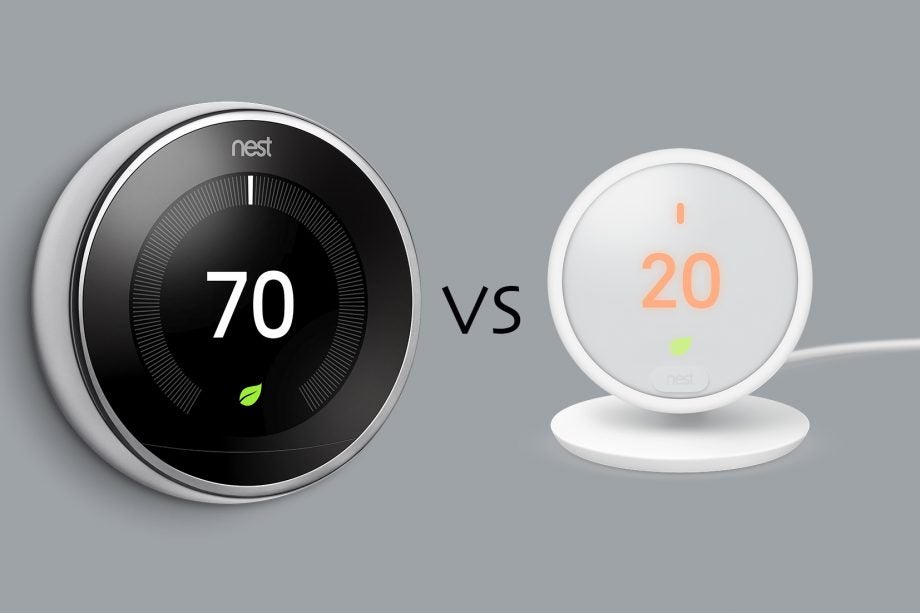
Although there are a load of smart thermostats available to suit a range of different needs and house types, Nest remains one of the biggest names. To make things a little more confusing, the company now has two smart thermostats to choose from, so we’ve pitted Nest Learning Thermostat vs Nest Thermostat E to find out which one is best for you.
The Nest Learning Thermostat, currently the 3rd Generation model, is still Nest’s “flagship” device, but it doesn’t come cheap, which is why Nest stripped away some of the bells and whistles for the Thermostat E. And if you opt for the Learning Thermostat do make sure it is the 3rd Gen, as older models miss out on some of the features mentioned below.
Nest Learning Thermostat vs Nest Thermostat E – At a glance
- The Nest Learning Thermostat has a nicer design and a few extras, while the E keeps only the essential features for a reduced price
- Both offer the same heating features, including “learning” your habits
- The Nest Learning Thermostat is compatible with more HVAC systems than the Nest Thermostat E
- The Learning Thermostat has a sharper display and further viewing angles, while the E is harder to read from a distance
Related: Best smart thermostat
Nest Learning Thermostat vs Nest Thermostat E – Design and installation
Ok, we know it’s a thermostat, but you want it to look nice, right? There’s a good chance you’ll recognise the Learning Thermostat; that black ring and orange core have become somewhat synonymous with the Nest brand.
The Learning model looks much more premium than the E. You can have your pick of material/colour for the surrounding case: stainless steel, mirror black (US only), brass (US only), polished steel (US only), white, black, and copper.
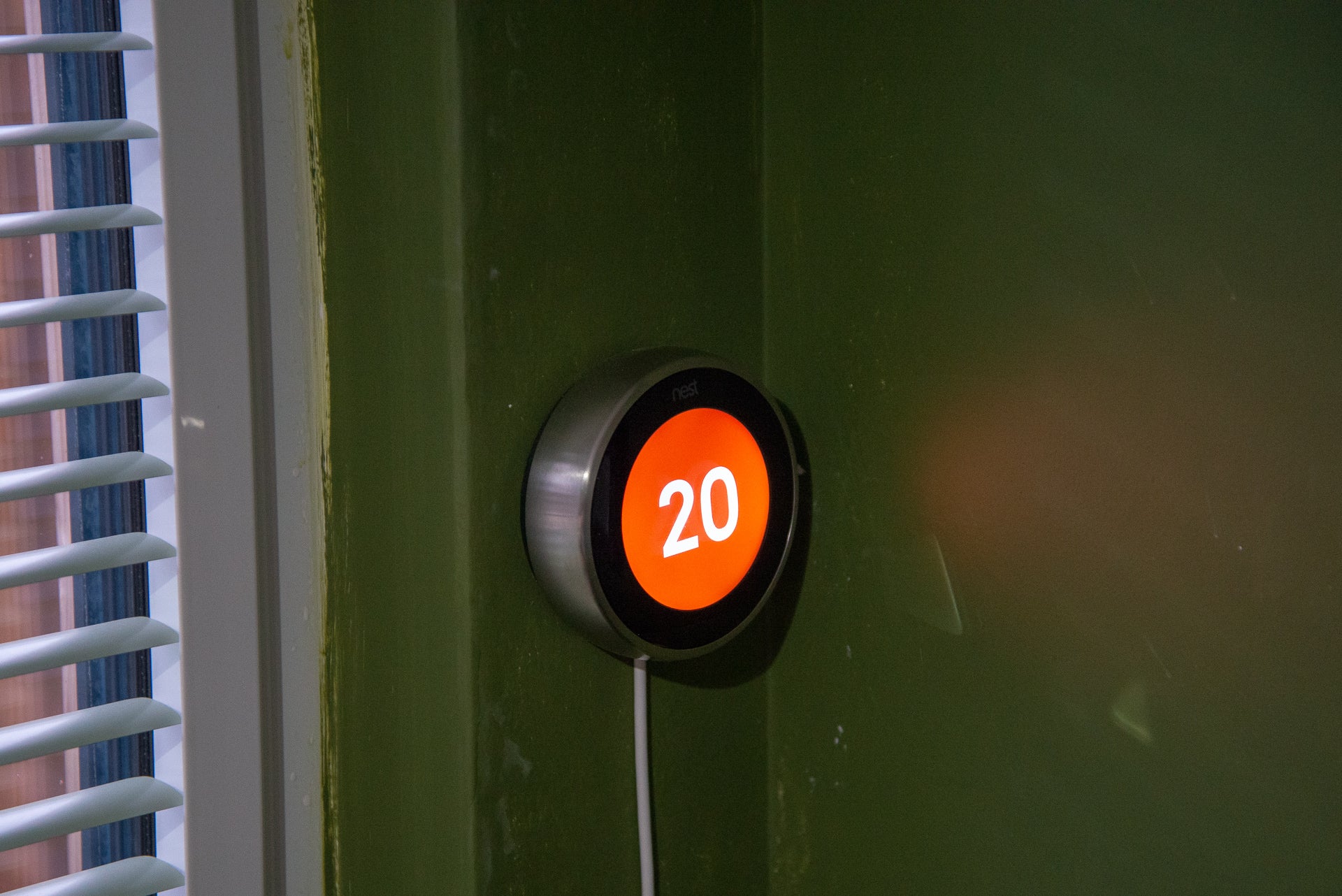
The Nest Learning Thermostat 3rd Generation
Meanwhile, the Thermostat E only comes in a basic off-white plastic, however you might find this helps it blend in a little better depending on your walls. It’s also a tad smaller with a 3.19-inch diameter, compared to the Learning’s 3.3-inches.
The Nest Learning Thermostat is designed to be wall mounted, powered by a USB cable, so you’ll need a handy socket. However, if you’ve already got a wired thermostat, you can power the Nest Learning Thermostat via the Heat Link using these existing cables. If you’d rather have it desk mounted, there’s an optional stand (£35) available. The Nest Thermostat E is also USB powered, although this model can only be used in the stand provided in the box.
The display is also different, the Learning Thermostat has a 480 x 480 resolution screen, whereas the E has a frosted display with a 320 x 320 resolution. It gives it a different effect that blends in but serves less information. You might actually prefer the Thermostat E’s display, it all comes down to individual taste.
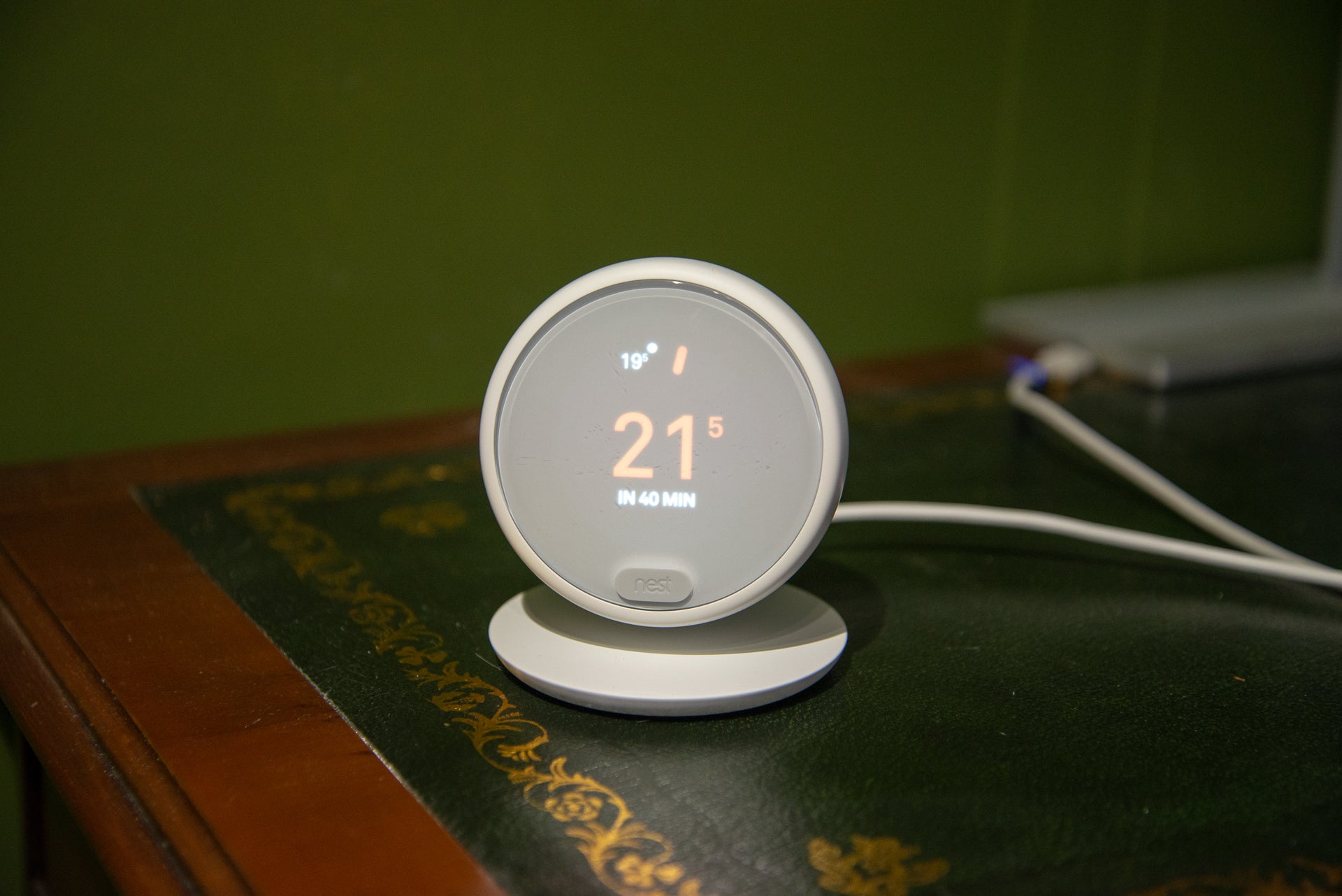
The Nest Thermostat E
While all this is important to know, the most essential thing is how the thermostats differ in compatibility. Nest has a helpful compatibility checker so that you can see if each thermostat will work with your current setup, but both thermostats will work with the majority of UK boilers.
In the UK, the Nest Learning Thermostat requires the provided Heat Link to be wired into your boiler, which means that you’ll need a heating engineer to do the job for you. The upside of using the Heat Link is that you can also get control over your hot water system, and it’s OpenTherm compatible, too, for greater savings when used with the right type of boiler.
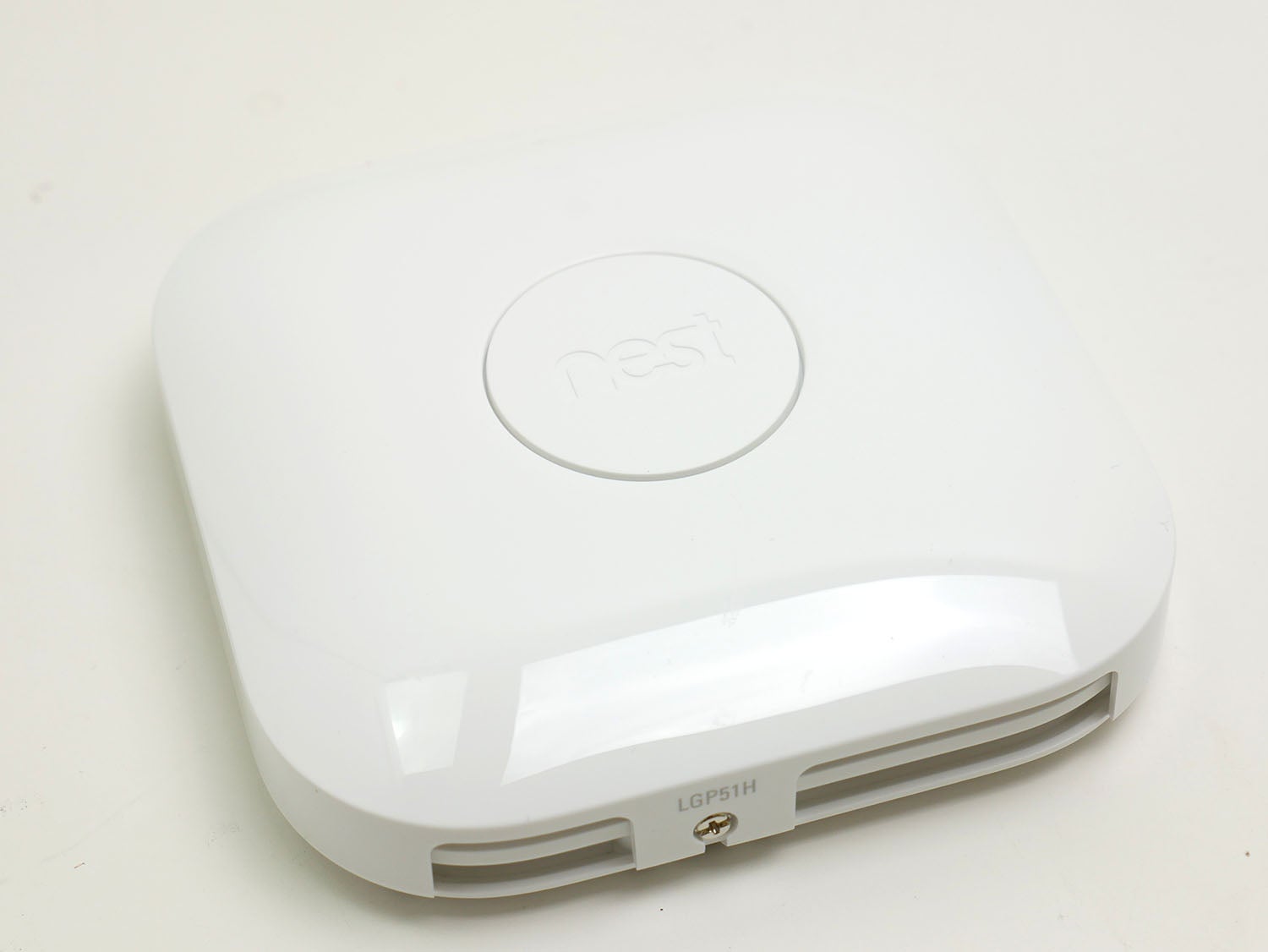
The Heat Link connects the Learning Thermostat to your boiler
The Nest Thermostat E uses a battery-powered Heat Link, which is designed to replace your existing wired thermostat, and so is user-installable in a matter of minutes. The downsides of this are that you can’t have hot water control and that you have batteries to replace, although they’re designed to last for years, dependent on use; the Learning Thermostat is entirely mains powered with battery backup in the thermostat unit.
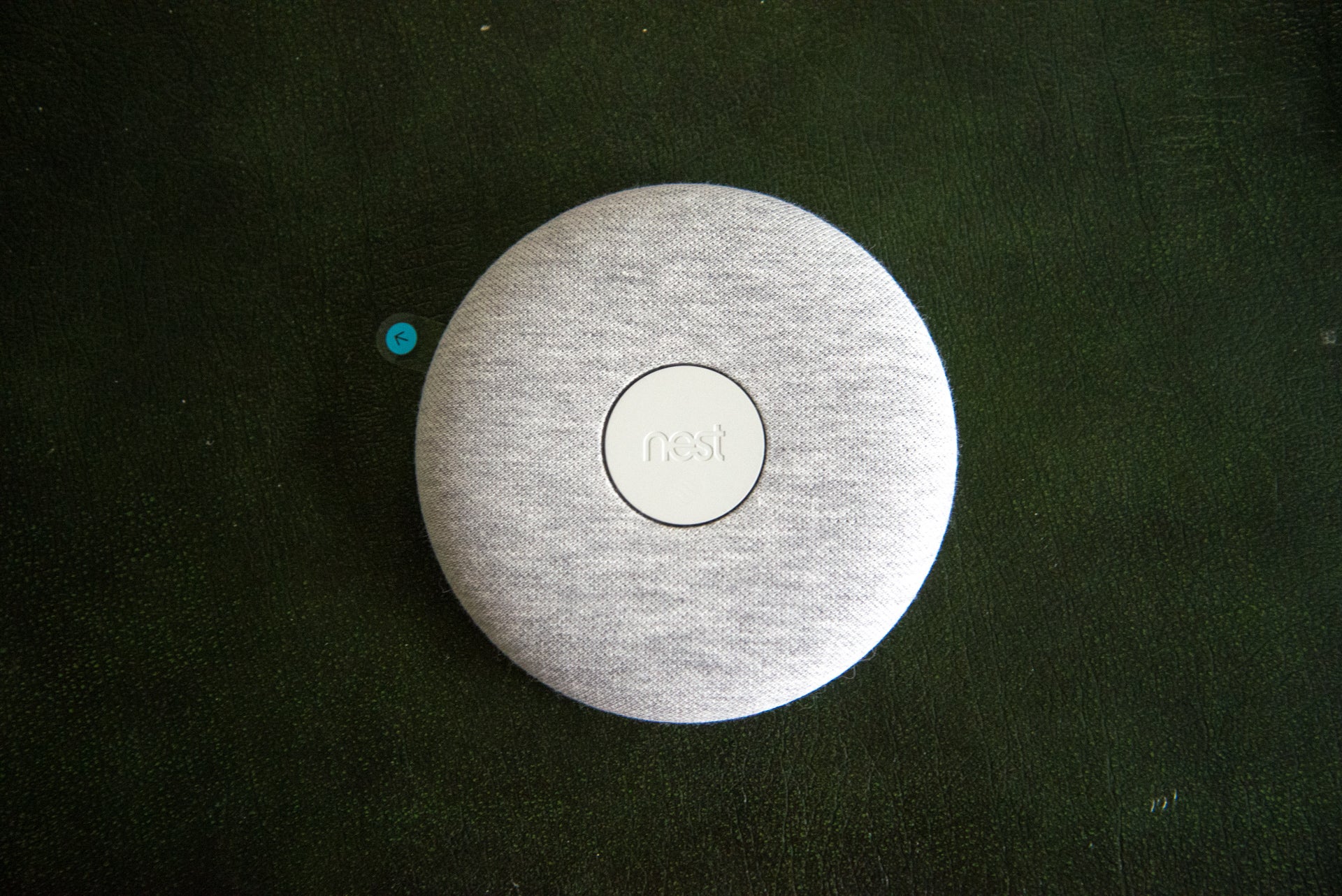
The Thermostat E’s battery-powered Heat Link is heating only and can’t do hot water
If you don’t have an existing wired thermostat, the Thermostat E will most likely need a heating engineer to fit, which may just nudge you towards the more expensive product.
Nest Learning Thermostat vs Nest Thermostat E – Features and performance
Let’s start by covering what both these thermostats can do. Both of them work to intelligent schedules. so they’ll detect when you’ve left the house and adjust the temperature accordingly (you’ll be able to set temperature ranges in the app), and adjust again when they see you’re home. They do this using Nest’s appropriately-named Home/Away feature, which you’ll also find on its cameras.
Both thermostats are intelligent, learning how you adjust them to automatically set the most comfortable schedule, although you can turn this feature off if you prefer. The main difference is that the Thermostat E comes pre-programmed with a schedule based on feedback from thousands of Nest thermostats, so it should already give you a fairly comfortable schedule out of the box. With the Learning Thermostat, you need to programme it first before turning on the learning mode.
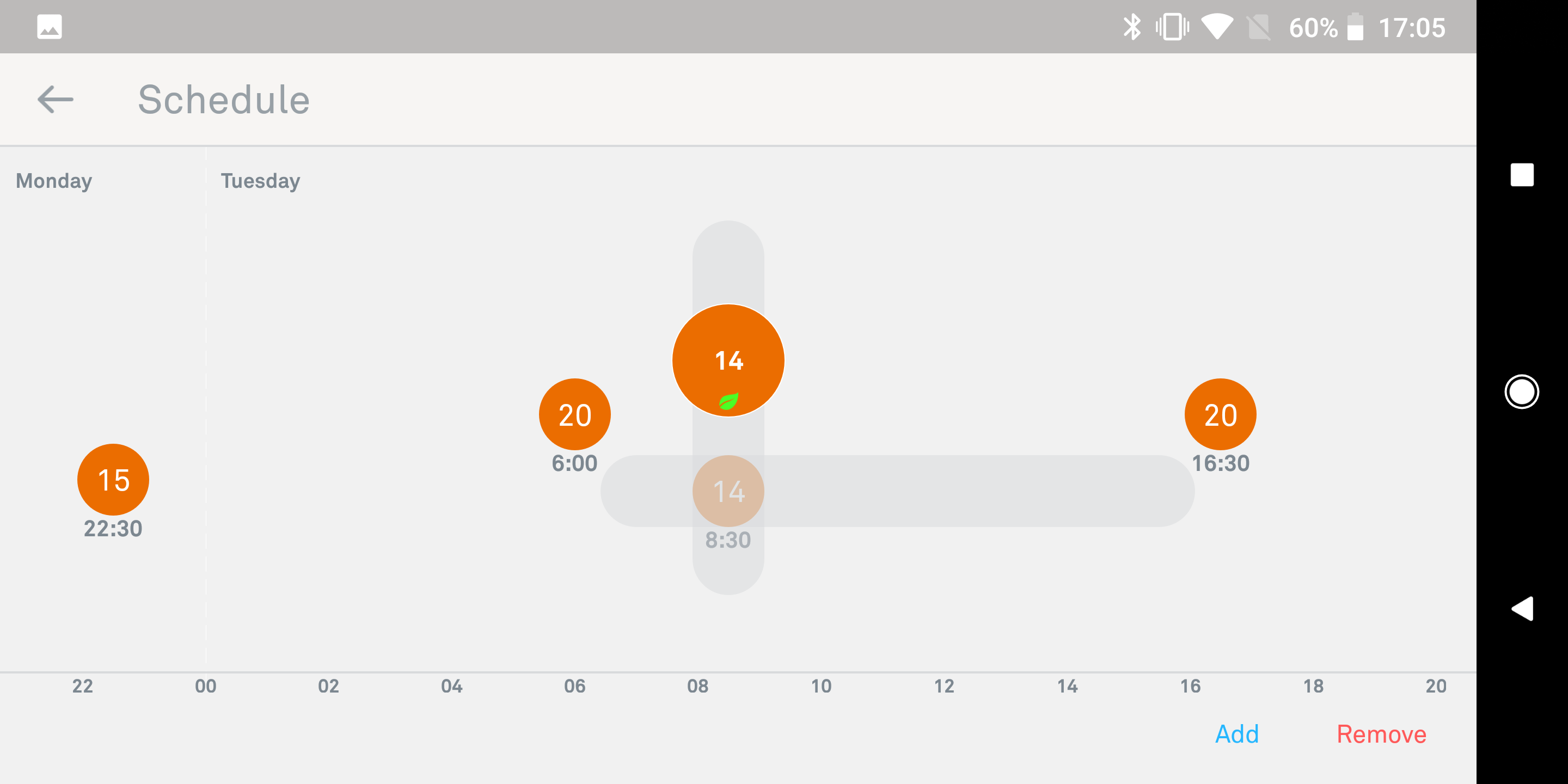
Both thermostats will learn your schedule but you can still manually programme them
Both thermostats also support integration with the Nest Temperature Sensor (US only), a small circular device you can place in a room to ensure the thermostat is warming that room exactly how you want it. However, neither thermostat comes with Temperature Sensors in the box, so you’ll have to purchase them separately.
The downside of the E’s more clandestine display is that it doesn’t show you as much information as the Learning Thermostat. The 3rd Gen Learning has something Nest likes to call Farsight, which simply means you can see time, temperature and weather information more easily from across the room. The E isn’t designed to be as easily readable from afar.
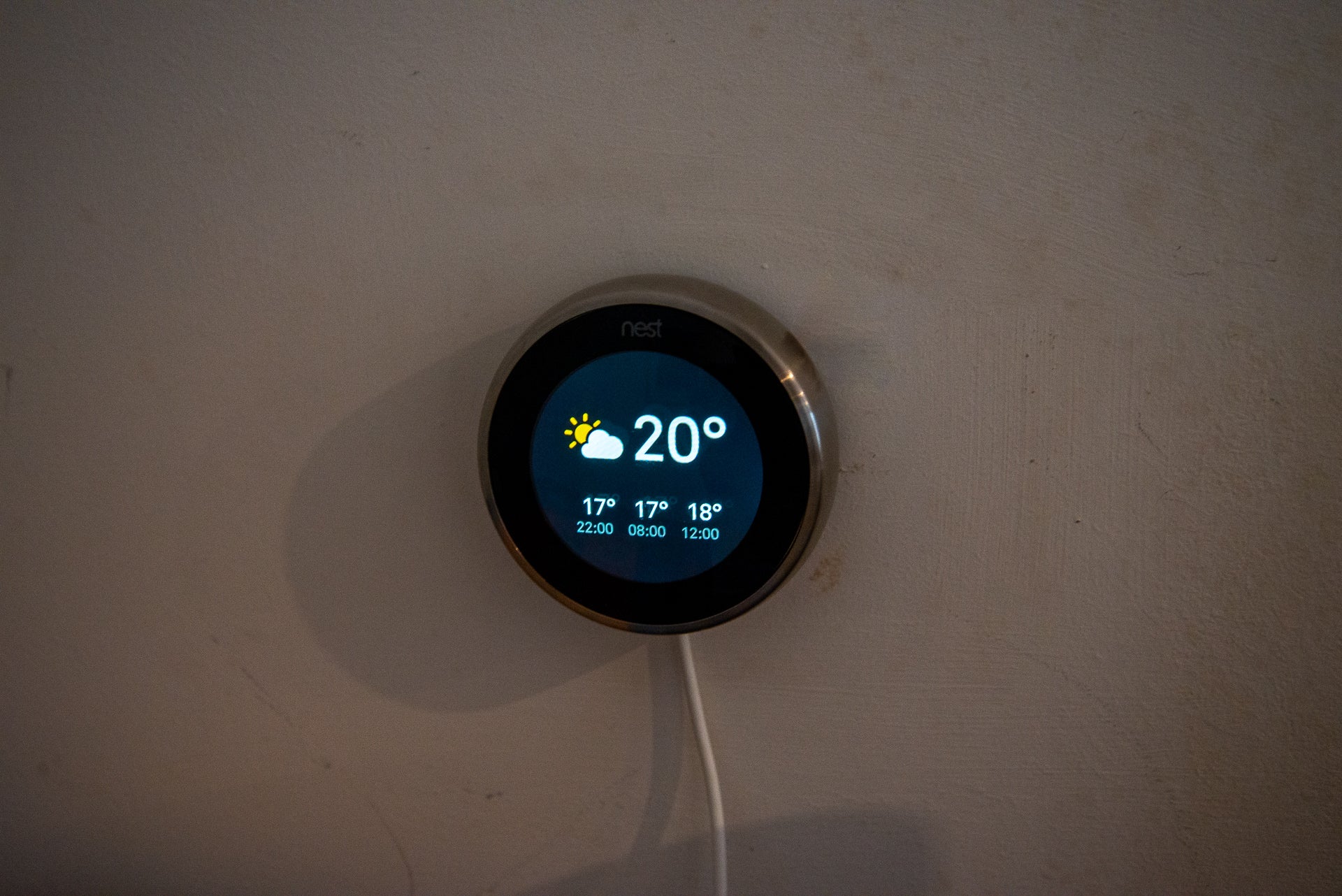
The Learning Thermostat’s Farsight displays more information at once than the E
If you also own a Nest Protect Smart Smoke & CO alarm, you can have your thermostat shut off forced air systems to stop smoke from spreading. There’s more to come too. A few months ago Google killed its Works with Nest program, replacing it with the new Works with Google Assistant platform that will support a new range of integrations. This new platform is only just getting started, and this year Google will roll out Home Routines, which will allow Nest products to do more with your other smart home devices.
But you don’t have to live entirely in Google’s world – there’s also an Alexa Skill that will let you control both thermostats by voice using an Amazon smart speaker. When the Thermostat E launched, Google originally didn’t add this product into the Alexa Skill but that oversight has now been fixed.
So now you know what each thermostat can and can’t do, let’s talk price. The Nest Learning Thermostat costs £219. The Thermostat E costs £199. Finally, the Learning Thermostat comes with a two-year warranty while the E’s only lasts for one year.
Nest Learning Thermostat vs Nest Thermostat E – Verdict
Largely, the Nest Learning Thermostat and the Nest Thermostat E do the same job, using the same app and interface. If you’re interested in controlling your heating only and you’ve got an existing wired thermostat, it makes sense to opt for the cheaper Nest Thermostat E.
If you don’t have a wired thermostat or you want to have control over your hot water schedule, the Nest Learning Thermostat makes more sense. It’s also technically the better product: it looks nicer, has a better screen and Farsight lets the thermostat display useful information, too.

